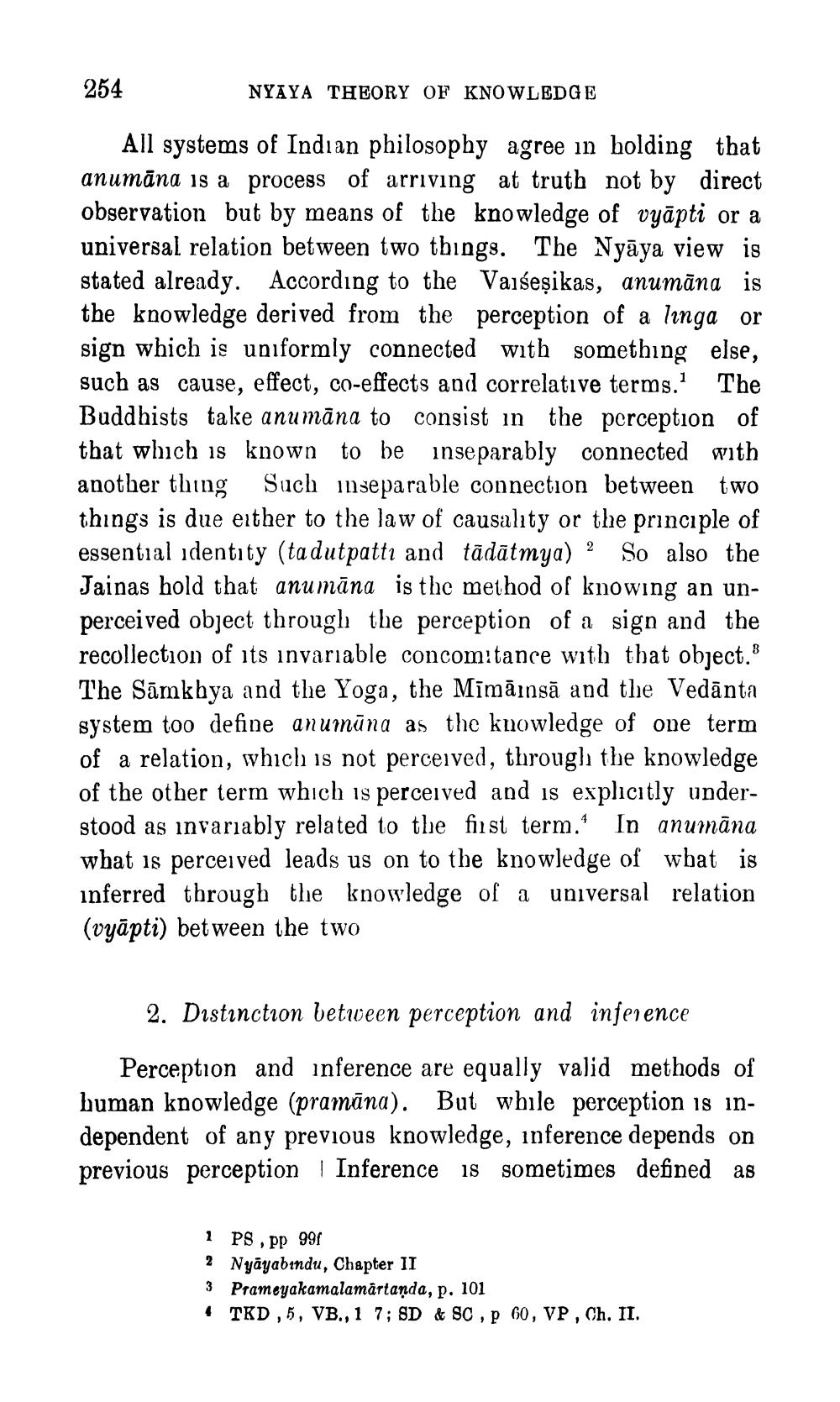________________
254
NYAYA THEORY OF KNOWLEDGE
All systems of Indian philosophy agree in holding that anumāna is a process of arriving at truth not by direct observation but by means of the knowledge of vyāpti or a universal relation between two things. The Nyāya view is stated already. According to the Vaiseșikas, anumāna is the knowledge derived from the perception of a linga or sign which is uniformly connected with something else, such as cause, effect, co-effects and correlative terms. The Buddhists take anumāna to consist in the perception of that which is known to be inseparably connected with another thing Such inseparable connection between two things is due either to the law of causality or the principle of essential identity (tadutpatti and tādātmya) ? So also the Jainas hold that anumāna is the method of knowing an unperceived object through the perception of a sign and the recollection of its invariable concomitance with that object.8 The Sāmkhya and the Yoga, the Mimāınsā and the Vedānta system too define anumūna as the knowledge of one term of a relation, which is not perceived, through the knowledge of the other term which is perceived and is explicitly understood as invariably related to the first term. In anumāna what is perceived leads us on to the knowledge of wbat is inferred through the knowledge of a universal relation (vyāpti) between the two
2. Distinction between perception and inference
Perception and inference are equally valid methods of buman knowledge (pramāna). But wbile perception is independent of any previous knowledge, inference depends on previous perception | Inference is sometimes defined as
1 PS, pp 996 2 Nyāyabındu, Chapter II 3 Prameyakamalamartanda, p. 101 4 TKD ,5, VB., 1 7; SD & SC, p 60, VP , Ch. II.




